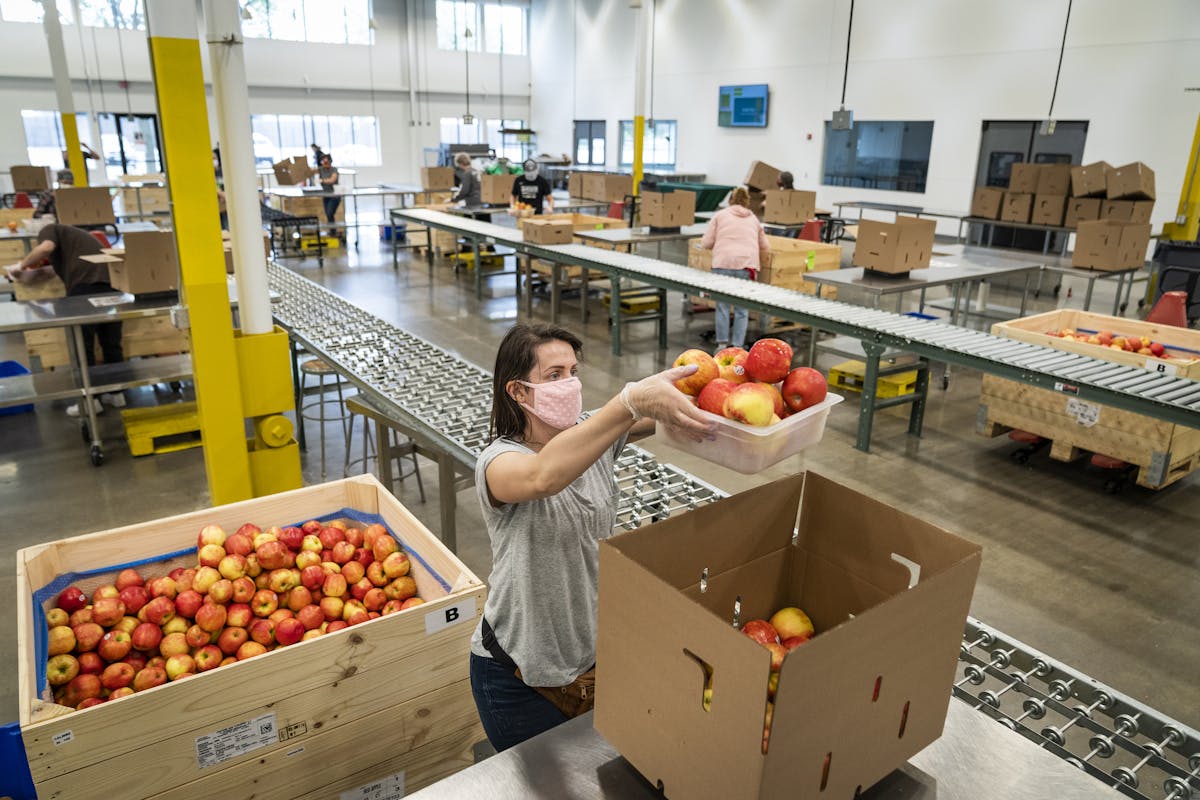Minnesotans doubled down Thursday on their generosity, giving more than $30 million for schools and nonprofits — setting a record in the 12 years of Give to the Max Day.
As nonprofits enter the critical year-end fundraising season, some leaders worried they'd tapped out donors with repeated calls for help in 2020 — first when COVID-19 hit and then after George Floyd's death sparked an outpouring in aid for racial justice and businesses damaged in civil unrest.
But Minnesotans, who often top the nation in lists ranking generosity, proved them wrong, flooding GiveMN's website with money and smashing 2019's record of $21.6 million.
"I think it's exceptional to see so many folks donating to the extent that they are, given the year that we've all had together," said Jake Blumberg, executive director of GiveMN. "And I think it shows, again, that Minnesota can step up and support one another when our communities need it."
While the event is pegged as a 24-hour fundraising blitz, the tally counts all donations since Nov. 1. Since organizations often rely on e-mails and social media posts to drum up support, Blumberg said "the original social distance fundraiser" was perfectly poised for a pandemic.
With Give to the Max Day, GiveMN has now hauled in a record total — more than $40 million — in 2020, three times as much as last year. More than $5 million of that came in for GiveMN's special second event of the year, Give At Home MN, in May. Then in June, after Floyd's death, more than $9 million was donated.
For the first time this year, GiveMN highlighted organizations on the front lines of the pandemic as well as those led by or serving people of color, including Black and Indigenous communities. Organizations such as the Native Governance Center in St. Paul said the extra attention helped address the funding disparity for Native American nonprofits.
The wider attention also draws new donors to small nonprofits like Appetite for Change in north Minneapolis.
"It's now become a Minnesota tradition," executive director Michelle Horovitz said of Give to the Max Day, Appetite for Change's single biggest fundraiser of the year. "People are starting to get used to giving on this day. It's a great opportunity to engage new donors."
The nonprofit, which works to increase access to healthy foods, collected $20,000 to help extend a new meal box program that delivers fresh food weekly to 300 North Side households. Horovitz said her organization has seen an influx this year in new, first-time donors after the pandemic first hit Minnesota in March and again after Floyd's death. That's helped alleviate a loss of revenue, with about half of a $3 million budget coming from income made at its two restaurants.
"Part of COVID is showing health disparities," Horovitz said of the racial disparities. "A lot of people are thinking not just about hunger relief but food justice."
More Minnesotans in need
Heather Kliewer's inbox was filling up Thursday with notifications of donors supporting Community Aid of Elk River, a food shelf serving northwest cities.
She nixed the usual fundraisers this year — a 5K benefit race in March and summer golf tournament — due to the pandemic and banked on Give to the Max Day bringing in revenue to cover operations and food for a growing number of families in need, especially families who have never sought help before.
Statewide, food shelves face double or triple the usual demand, and hunger relief organizations predict as many as 735,000 Minnesotans could be "food insecure," without access to healthy food. That's 13% of the state's population.
With coronavirus cases and deaths spiking in Minnesota and new restrictions announced Wednesday by Gov. Tim Walz, shutting down bars, restaurants and gyms Friday until Dec. 18, Kliewer worries that "the number of people in need of help is just going to go up."
Hunger relief and animal organizations were among the top fundraisers for Give to the Max Day, including Second Harvest Heartland, one of seven food banks in Minnesota, which will start paying for prepackaged foods or have employees pack food boxes after canceling all volunteer shifts through January out of concern for the safety of volunteers.
The St. Paul & Minnesota Foundation was also among the top for donations after just launching a new national fund to benefit families of health care workers who died of COVID-19.
About 6,000 nonprofits and schools solicited donations on GiveMN's site this year, about one-third of the state's more than 15,000 nonprofits. (Donations come with a 6.9% transaction fee, though GiveMN says most donors pay that fee on top of their donation.) The average donation was about $100 and donations poured in from every county in the state.
In a new survey this week of Minnesota nonprofits, leaders said they're bracing for a worse 2021 after most have changed or cut programs, budgets, hours and facilities while increasing fundraising to try to adjust for rising costs and depleting revenue.
"The need has gone up so significantly this year," Blumberg said. "They're being asked to meet needs that have been historically high ... and you can't do that without financial resources."
Body camera video shows Minnetonka man shooting at deputies several times before dying in firefight
Charge: Driver going 77 mph ran red light, fatally hit man crossing St. Paul street and kept going
Minnesota Senate GOP files ethics complaint against Sen. Nicole Mitchell
High school archer focuses on target: another national championship

